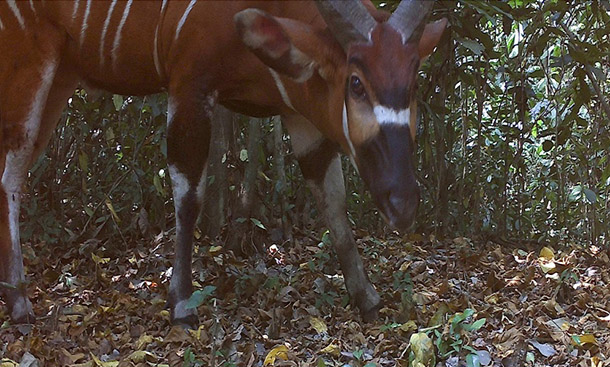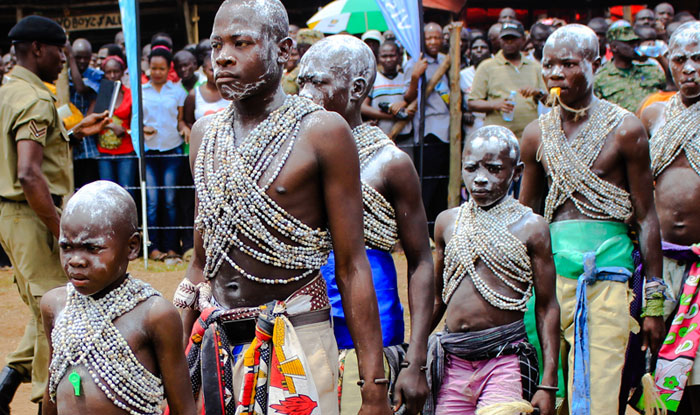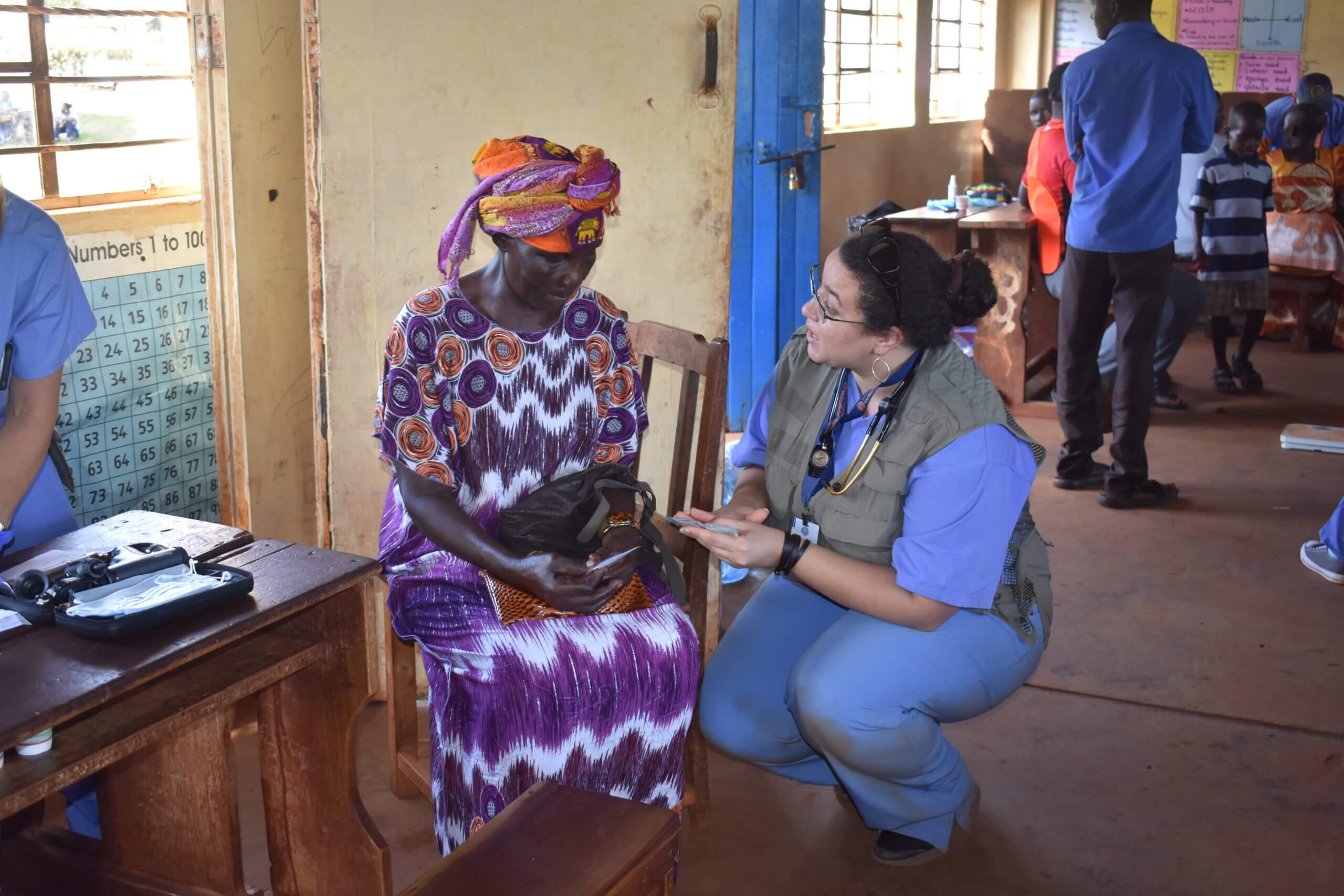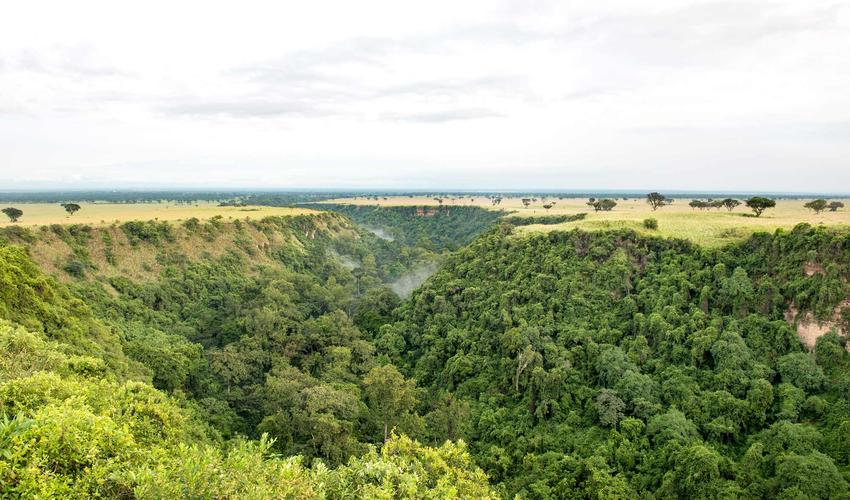Indeed Uganda is “The Pearl of African” and little is known to us than we presume, to the surprise of many wildlife and Nature enthusiasts, the world’s largest forest antelope species was recently captured on camera in Uganda for the very first time courtesy of motion sensor cameras placed in Semulik National park by conservationists of Chester Zoo. The animal is popularly recognized as the low land Bongo scientifically known as Tragelaphus eurycerus eurycerus and sometimes also referred to as the Western Bongo. The lowland Bongo is listed among the near-threatened wild animal species with a remnant population of approximately 30,000 animals living in the tropical forests of Central and West Africa. Semuliki National Park is famous for classic Uganda birding safaris among other experiences and is located along the Uganda-Democratic Republic of Congo Border.
This Western Bongo is endemic to central and West Africa, its physical traits include long slightly spiral horns, a striking reddish-brown body color with white stripes along the back, a shoulder height of 1.3 meters and weight of 800 Ibs. These animals are shy and live as solitary individuals. Unlike former times when their home range was restricted to the Democratic Republic of Congo, some parts of Kenya, West Africa and Central African Republic, these days it has extended even to the famous Pearl of Africa. In addition Mr. Stuart Nixon from England’s Chester Zoo –Africa Field Program concluded that “this could be because the western Bongo and other species in the region are roaming in the middle of Virunga and Uganda.” This therefore encourages us to protect our rain forests jealously.
There is a possibility that so many other animals shall be recorded as well through the camera trap technique. We presume that these could turn out to be forest buffaloes, elephants, chimps, leopards or even more distinct forest individual for instance the slippery African golden cat, Common kusimanse or even the cunning elephant shrews. The sad fact is “there are presently no bongos being conserved in any zoo apparently and thus diligent efforts have to be established to conserve these innocent creatures. Somebody has to raise their voice or even suppose a strong action against the nodding vices of Human encroachment on protected areas, logging, poaching and any other forms of illicit animal trade. These have to stop for a better future for wildlife ahead.





